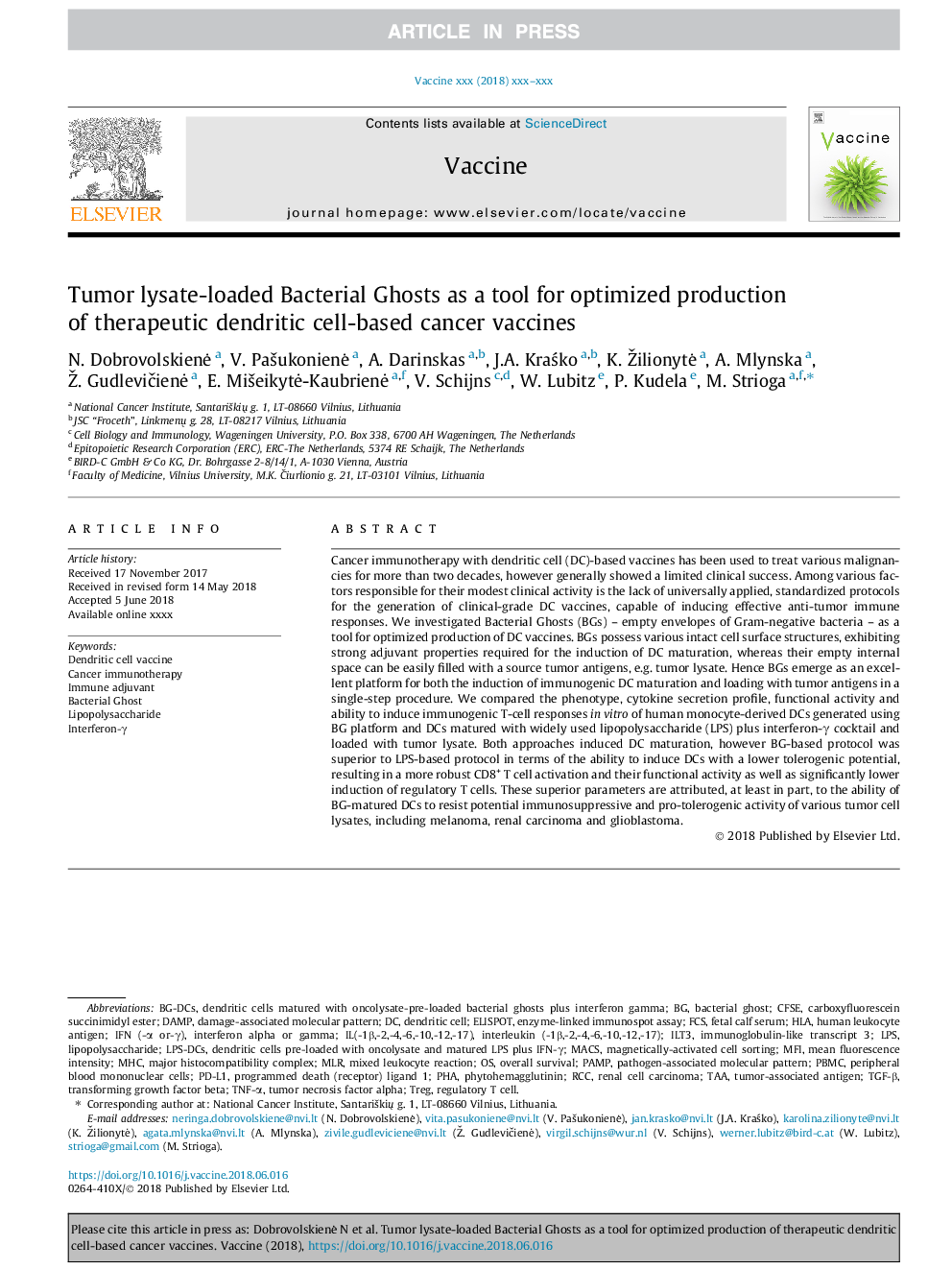| Article ID | Journal | Published Year | Pages | File Type |
|---|---|---|---|---|
| 8485488 | Vaccine | 2018 | 10 Pages |
Abstract
Cancer immunotherapy with dendritic cell (DC)-based vaccines has been used to treat various malignancies for more than two decades, however generally showed a limited clinical success. Among various factors responsible for their modest clinical activity is the lack of universally applied, standardized protocols for the generation of clinical-grade DC vaccines, capable of inducing effective anti-tumor immune responses. We investigated Bacterial Ghosts (BGs) - empty envelopes of Gram-negative bacteria - as a tool for optimized production of DC vaccines. BGs possess various intact cell surface structures, exhibiting strong adjuvant properties required for the induction of DC maturation, whereas their empty internal space can be easily filled with a source tumor antigens, e.g. tumor lysate. Hence BGs emerge as an excellent platform for both the induction of immunogenic DC maturation and loading with tumor antigens in a single-step procedure. We compared the phenotype, cytokine secretion profile, functional activity and ability to induce immunogenic T-cell responses in vitro of human monocyte-derived DCs generated using BG platform and DCs matured with widely used lipopolysaccharide (LPS) plus interferon-γ cocktail and loaded with tumor lysate. Both approaches induced DC maturation, however BG-based protocol was superior to LPS-based protocol in terms of the ability to induce DCs with a lower tolerogenic potential, resulting in a more robust CD8+ T cell activation and their functional activity as well as significantly lower induction of regulatory T cells. These superior parameters are attributed, at least in part, to the ability of BG-matured DCs to resist potential immunosuppressive and pro-tolerogenic activity of various tumor cell lysates, including melanoma, renal carcinoma and glioblastoma.
Keywords
PAMPTGF-βILT3CFSEMACSRCCELISPOTTregFCSPhytohemagglutininDAMPPD-L1MLRLPSPHATAAMFIPBMCEnzyme-linked immunospot assayHuman leukocyte antigentumor-associated antigenHLAdamage-associated molecular patternpathogen-associated molecular patternCancer immunotherapyinterferon-γoverall survivalTransforming Growth Factor Betatumor necrosis factor alphabacterial ghostfetal calf serumRegulatory T cellDendritic cellperipheral blood mononuclear cellsTNF-αlipopolysaccharideMHCmajor histocompatibility complexmean fluorescence intensityDendritic cell vaccinemixed leukocyte reactionRenal cell carcinomacarboxyfluorescein succinimidyl esterImmune adjuvant
Related Topics
Life Sciences
Immunology and Microbiology
Immunology
Authors
N. DobrovolskienÄ, V. PaÅ¡ukonienÄ, A. Darinskas, J.A. KraÅko, K. ŽilionytÄ, A. Mlynska, Ž. GudleviÄienÄ, E. MiÅ¡eikytÄ-KaubrienÄ, V. Schijns, W. Lubitz, P. Kudela, M. Strioga,
